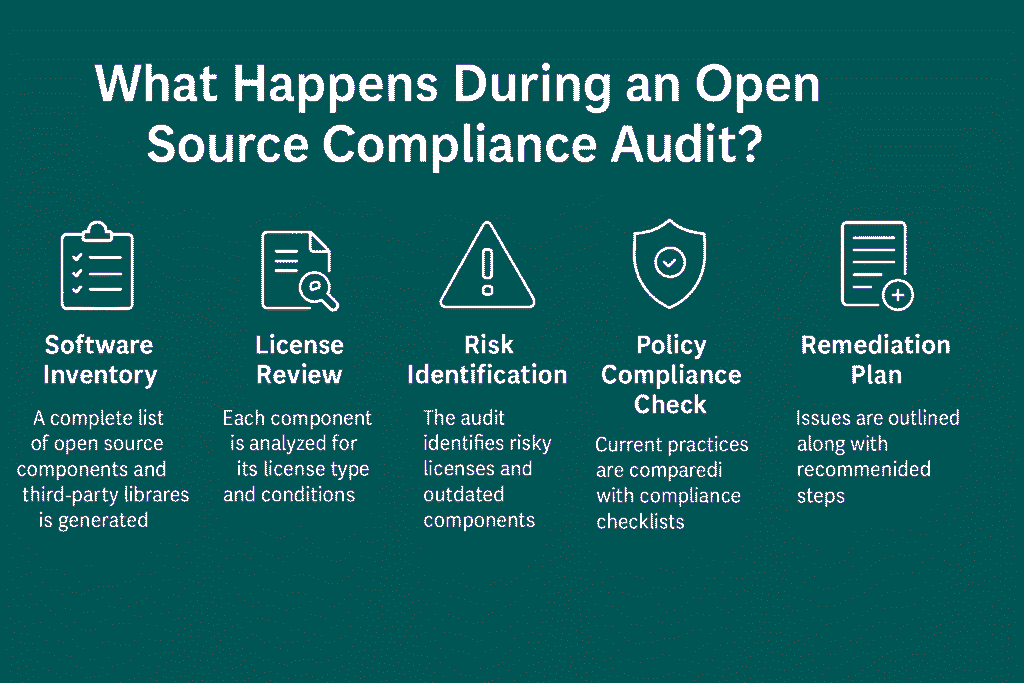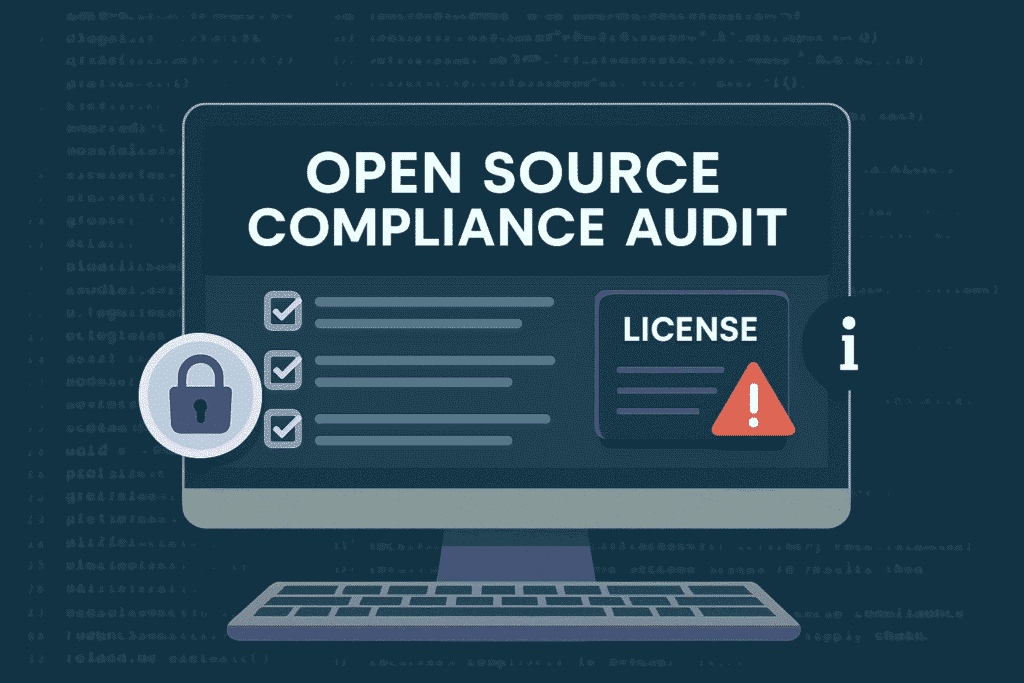As businesses increasingly rely on open source software (OSS), staying compliant with licensing requirements is no longer optional. It is essential. Whether you are a startup preparing for funding or a growing SaaS company scaling operations, understanding what happens during an open source compliance audit can protect you from legal, financial, and reputational risks.
At Yahyou, we help businesses proactively manage open source risks through audit-ready systems and proven workflows. This article explains what to expect during a compliance audit and how to prepare for it effectively.
What Is an Open Source Compliance Audit?
An open source compliance audit is a formal review of the open source software components used in your codebase. The goal is to ensure that all licenses are being followed and that your organization is not unknowingly violating legal terms.
Audits are commonly triggered by events such as funding rounds, acquisitions, new product releases, or internal risk assessments. They help identify potential issues related to licensing, attribution, or code reuse, which, if ignored, could result in legal disputes or project delays.
To understand the foundation of compliance, read our detailed guide: Open Source Compliance 101
Who Conducts the Audit and What Are They Looking For?
Compliance audits can be conducted internally by legal or engineering teams, or externally by a specialized firm. Yahyou offers third-party audits that provide an unbiased, expert-driven review of your OSS usage.
During an audit, reviewers look for:
- All open source components, including transitive dependencies
- The specific license attached to each component
- Whether your organization has fulfilled the obligations of each license
- Any use of high-risk licenses that may conflict with your business goals
- Documentation practices and risk tracking procedures
If your team cannot account for every component or lacks proper documentation, the audit may reveal non-compliance that requires remediation.
What Happens During the Audit Process?

The open source compliance audit typically follows a step-by-step workflow:
- Software Inventory
A complete list of all open source components and third-party libraries is generated. This is often referred to as the Software Bill of Materials (SBOM). - License Review
Each component is analyzed for its license type, and the conditions associated with that license are documented. - Risk Identification
The audit identifies incompatible or risky licenses, outdated components, and missing attribution notices. - Policy Compliance Check
Auditors compare your current practices with a compliance checklist to ensure you are meeting required standards. - Remediation Plan
A detailed report is prepared, outlining the issues found and providing recommended steps to resolve them.
For organizations seeking to align with global standards, the OpenChain Project by the Linux Foundation offers a trusted framework for open source compliance across the software supply chain.
For many businesses, this process also acts as a blueprint for building stronger compliance workflows moving forward. For more details about the tools and services we use during this process, visit our Open Source Compliance Management page
Tools and Documentation You Should Prepare
A smooth audit depends heavily on how well-prepared your documentation and tools are. Here are some of the key elements your team should gather in advance:
- A current and complete SBOM
- Dependency tracking reports from your build tools
- Clear documentation of license obligations and how you fulfilled them
- Your organization’s open source policy and any previous audit history
- Evidence of any previous mitigation efforts
Using license compliance tools and automation can simplify much of this preparation. Yahyou’s in-house software generates audit reports, identifies risks, and keeps a record of compliance history for ongoing visibility.
Common Mistakes Companies Make During OSS Audits
Many businesses unknowingly introduce risks that could be caught during an audit. Here are some of the most common mistakes:
- Keeping no centralized record of OSS components
- Overlooking transitive dependencies pulled in by frameworks or package managers
- Failing to document or include license attributions in product distributions
- Assuming permissive licenses require no action
- Using manual tracking methods like spreadsheets instead of compliance tools
These issues are common but avoidable with the right system in place. You can learn more in our blog: 7 Common Mistakes in Open Source Compliance
How Yahyou Helps You Stay Audit Ready
Yahyou provides more than just compliance audits. We help businesses build and maintain compliance systems that are scalable and easy to manage. Our process includes:
- Automated SBOM generation and license mapping
- Real-time risk alerts for license or security issues
- Structured documentation workflows for legal review
- Ongoing support to ensure continued compliance even as your codebase evolves
We also tailor compliance solutions based on your industry. Whether you operate in fintech, SaaS, or health tech, our team can adjust the audit framework to meet your specific legal and operational needs.
For an overview of how compliance strengthens your long-term growth, read Why Open Source Compliance Is Important for Your Business
Final Thoughts
An open source compliance audit is not something to fear. It is an opportunity to bring clarity and control to your software stack. Organizations that invest in compliance early are better positioned for growth, funding, and legal safety.
At Yahyou, we help businesses avoid surprises and maintain audit readiness through practical, ongoing support.
If you are ready to assess your software environment or need help preparing for an upcoming audit, we are here to help.
Start your compliance journey today.
Contact Yahyou for a free consultation



